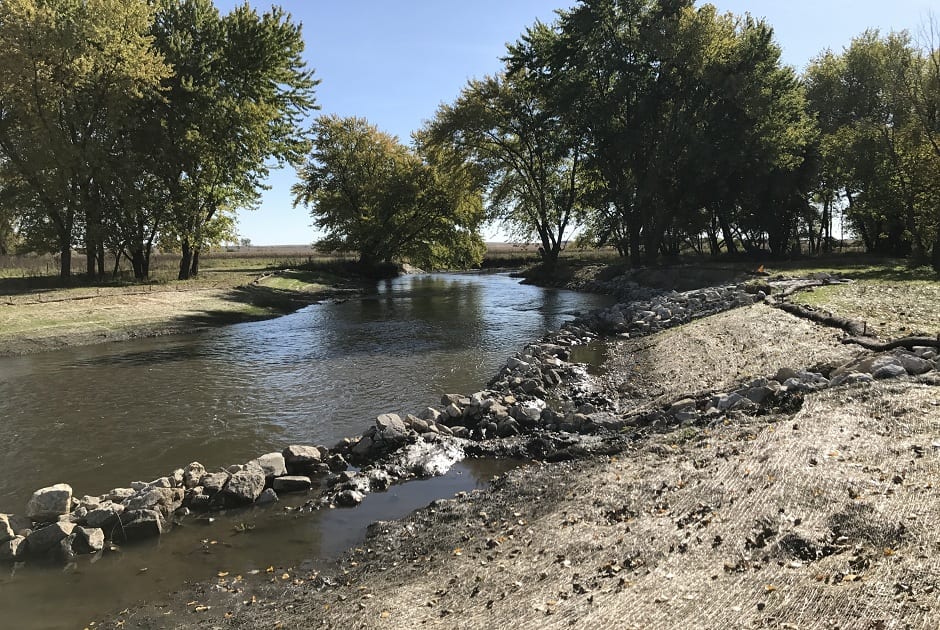One of the many methods frequently used to minimize pipeline erosion is known as longitudinal peaked stone toe protection (LPSTP).
What Is LPSTP?
LPSTP is a stone dam placed at the toe of a bank. Typically, this is done in an area where pipeline erosion is a critical threat and continuous bank protection is needed. LPSTP works best when the embankment is placed longitudinally and the mid to upper levels of the bank have already been stabilized. By creating a smooth outer bank, there is often less erosive water flow.
The amount of stone needed depends significantly on:
• Estimated stream forces
• Flood durations
• The depth of scour at the toe
During a situation with high water flow, like a rainstorm or seasonal flooding, the stone from the LPSTP will re-adjust itself, scouring at the toe. Typically, the rock that is used in these projects is self-launching, but the success of the project depends solely on the ability of the stone to push itself into scour holes.
Tie-Backs
Another component of LPSTP is tie-backs. These short dikes help to connect the bank to the LPSTP. To prevent pipeline erosion and to stabilize the LPSTP, Submar recommends placing the dikes at regular intervals. Although typically the same height as the LPSTP, tie-backs can also be elevated slightly toward the end of the bank. For LPSTP to be successful, it must be keyed into the bank both downstream and upstream.


